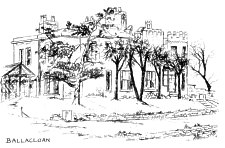
Ballacloan - the original home of NCH on the Island
JOAN BARRITT
Published by the National Children's Home to celebrate the centenary of its work in the Isle of Man.
1980
Every year thousands of visitors flock to Ramsey in the Isle of Man to see the Tourist Trophy motor-cycle races; but long before the TT races were thought of NCH children knew this now-familiar course which snakes over the hills west of the town, for it is 100 years since NCH Ramsey was established.
The Isle of Man has recently celebrated 1,000 years of history. Its parliament, Tynwald, was founded by the Vikings and the Island still remains a self-governing dependency of the British Crown.
Ramsey itself is the second largest town after Douglas. It clusters around the mouth of the River Sulby in the north of the Island, facing the English Lake District.
Behind the old harbour is Mooragh Park, where palm trees fringe a 12-acre boating lake, giving a tropical lagoon atmosphere - and all this is overlooked by 'Dalmeny', the present NCH branch.
Official mention of Ramsey appears in the 1878 Annual Report of NCH's first Principal, the Rev. Dr T. B. Stephenson. A certain Miss Gibson had been running a children's home in Ramsey known as 'The Suzannah Gibson's Refuge for Destitute Children'. This institution had been run specifically for Isle of Man children and, before she died in 1880, Miss Gibson had asked for it to be affiliated to Dr Stephenson's organisation. NCH in the Isle of Man therefore dates from 1st September 1880. It was the fifth branch to be established and 29 children were resident in the house, 'Ballacloan'.

Ballacloan - the original home of NCH on the Island
Finance can be a dull subject, but some figures from the early financial statements are worth mentioning. In the first seven months the total expenditure was £275 10s. During this time no local subscriptions were received because they had already been paid to Miss Gibson before she died! During the next financial year, from 1881 to 1882, the total expenditure was £300 2s. 4d., an annual cost per child of £10 16s. - a vastly different story from today!
It was not uncommon for private benefactors to pay money out of their own pockets and the generous Miss Gibson had valiantly kept the cost down to £10 a year, which was no small achievement.
Understandably, some Islanders were worried lest this 'takeover' by an organisation from the mainland should mean that only English children would benefit. Dr Stephenson stated that the intention was to serve the needs of the Isle of Man. Indeed he made it very clear that the eight Manx children cost £86 per year and the Island's subscription amounted to only £75 per year! He was also able to report that six Manx children were already being cared for in English branches at no cost to the Island. But we must not give the impression of an unfriendly welcome. Understandably the Islanders were anxious to ensure that the needs of their own children were regarded as a priority.
Dr Stephenson's first report concludes with this short paragraph:
"The moral and religious tone of the Home has been well maintained during the year and the conduct of the children has been generally excellent and gives promise that in their after life, the great object of the existence of the Home will be attained."
In a well-known Children's Home publication called The Children's Advocate of January 1884, Mr J. Pendlebury wrote fascinatingly about this 'fifth and least [i.e. smallest] Branch of the Children's Home', which was the 'baby Branch of the Institution'. He went on, 'There is this peculiarity with Ramsey . . . it is an adopted child. . . a goodly child... . and a vital Branch, now deriving its support from the parent Institution as every other Branch; but it was not born of the London Home as all the other Branches were. .. . Within the walls of this small Institution, real and important work is being done, work for the church, work for the benefit of the world, and work also for God. ... Young, as some of these children are, they have passed through an experience such as no child born in Christian England ought to have to endure. If the good friends of the Children's Home who have contributed towards the support of the work could see the happy condition of these children they have helped to bless, they would feel amply recompensed for every self-denial their charity has cost them.
The Superintendent at this time (1884) was Miss Hurley, previously a worker with Suzannah Gibson and assisted by Sister Ella McPherson, a young worker promoted by the Principal to the office of Sister in recognition of 'the worth of one who has grown up in the Home in London'. It is interesting that in these early days Sisters were both created and recognised in this way. Later in life Sister Ella McPherson became the second Mrs Stephenson.
During the next few years the numbers of children increased, as did income and expenditure. The annual reports described the branch as being healthy and 'a pleasant and valuable outpost of our work'. Children who left were often placed in jobs in England and some went to Canada under the emigration scheme.
In the summer of 1889 an epidemic of scarlet fever (a serious illness in those days) broke out in the town, causing the withdrawal from school of 45 children for one month. They spent the time in the open air on the beach and none caught the disease. By 1891 the annual expenditure had risen to £900 and there was much local interest and helpful contact with Waterloo Road Methodist Church and also with a new chapel [North Shore] near the branch where the children augmented the choir. The Young Leaguers' Union had a regular scheme of bazaars and sales throughout the Island to raise money for the branch. NCH was now fully accepted. Manx men and women were supporting the work in every possible way and Sister Lizzie Grigg arrived to take charge of the work.
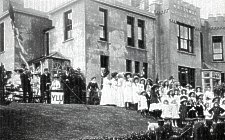
A Y.L.U. meeting at Ballacloan
In 1895 Dr Stephenson brought his band and choir to a special event at 'Ballacloan' when the Governor of the Island attended and £160 was raised - a truly splendid sum for those days. Even the Manx railway was helpful by allowing special fare concessions for the young people, including reductions for travel to the mainland. It is also good to note that, as a true forerunner of the present-day Association of Friends, the Young Leaguers' Union not only raised money but helped children. They took them on picnics and provided all kinds of entertainment. But it was not only a one-way traffic; in a report of March 1902 we are told that the branch had given entertainment to an invited audience at 'Ballacloan' when the Rev. R. Davidson took the chair and the collection realised the goodly sum of £2 13s. 3d:!
There was always a welcome for visitors - the ordinary friends who came to see the children, and sometimes famous people such as Hall Caine, the Manx writer, who had previously visited NCH work at the Hamilton branch in Canada.
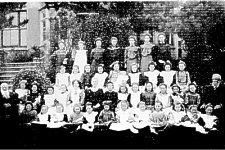
[Unlabelled in booklet - Sister Lizzie Grigg is middle 2nd row
all girls - probably late 1890s?]
The Isle of Man is a place of great beauty; the people are gentle and considerate; so it is not surprising that over the years some members of staff have stayed very much longer than they intended. This is certainly true of Sister Beryl Bonwick who is in charge of the branch during the Centenary Year, and of Sister Lizzie Grigg who, in 1911 after completing 21 years' service at Ramsey, retired to the special accommodation at the Alverstoke branch where she lived for many years, often remembering her Manx children.
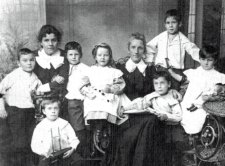
Sister Lizzie Grigg with some of the children
In 1917 the Dalmeny Hydro was bought by NCH and extended to take the girls of the branch, leaving behind 35 boys at 'Ballacloan'. Visits continued to be made by the Principal and by children from other branch homes. In 1918 the 50th Annual Report of NCH tells how the Principal and choir from Frodsham toured the Isle of Man, awaking interest and sympathy and raising £200 towards the Jubilee Fund.
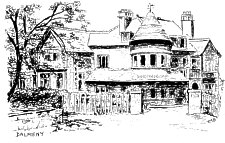 |
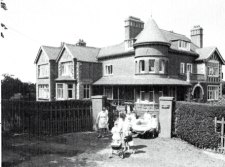 Dalmeny prior to extensions of 1974 |
The best kind of child care is uneventful for it consists of the regular, persistent, day-by-day caring, sorting out problems and resolving crises. This was true of life at Ramsey between the Wars. Seventy children were cared for by a succession of Sisters in the two houses but gradually the numbers were reduced as smaller family groups were introduced. There were the usual pastimes including cycling, swimming, singing, walking, cricket and gardening, as well as membership of organisations such as the Boys' Brigade. Ramsey has always been a popular place for visitors and many NCH friends and retired staff spend holidays on the Island, calling at the branch. Reports tell of time spent on beaches, the enjoyment of swimming and boating, picnics, outings and, for the more energetic, the climbing of Snaefell. The Island scenery is a constant cause for admiration and year by year reports tell particularly of the daffodils which still grow profusely, providing beauty and pleasure.
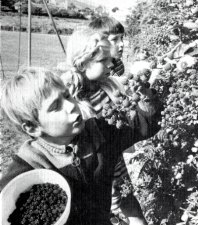
With the coming of the Second World War things began to change. Flower beds gave way temporarily to vegetable crops as the branch tried to be self-supporting. Blackberries were picked in the nearby lanes (a practice still continued as you will see from the photograph opposite). Windows were blacked-out and all the paraphernalia of wartime came to the Island. Although the war must have seemed fairly remote, nevertheless, as at other branches of the home, old girls and boys joined the Armed Services and were a reminder that even this island of peace had sons and daughters in many faraway places fighting for their country.
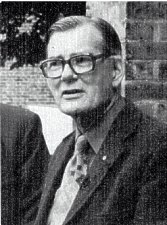
Russell Harman
In 1947 Russell Harman, the first man to take charge of the work, arrived with his wife. They were captivated by the Island and its small community and very quickly entered into its life. By this time the children were taking an interest in the famous TT races and in subsequent years this special event was often mentioned in Our Family News. The field at 'Ballacloan' was prepared and made ready for football. At 'Dalmeny' the old laundry-cum- playroom was converted into a lovely little chapel through the generous help of friends from Ealing. The pulpit, the reading desk, the communion rail and table were made locally, and the Bishop of Sodor and Man conducted a service of dedication.
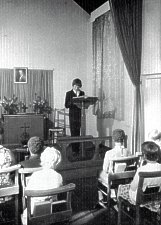
The 'Dalmeny' Chapel
It was during Mr Harman's time that strange things seemed to happen in the coal cellar beneath the building! Whenever the shed door was open the draught moved the mats in the hall above. Mysteriously this happened even after the door was firmly shut until one evening an alarm bell, which had been fixed to the door, went off. Mr Harman and a bodyguard of older boys rushed down to find a little old lady, from next door, quietly collecting large lumps of coal for her own fire!
The Governor of the Island and his Lady, Sir Geoffrey and Lady Bromet, visited 'Dalmeny' and invited the children to tea at Government House. This was a wonderful occasion, but whilst the children thoroughly enjoyed their tea, they were equally interested in the number plates of the Governor's cars - his being MAN 1 and Lady Bromet's MAN 2!
On another occasion an elderly solicitor from Liverpool called without warning, simply anxious to give £2,000 to the branch in memory of his wife. He named a cot and chose a picture which was placed over it; twice every year he visited 'Dalmeny' to see the picture. His wife had been a Manx girl and he regularly sent Mr Harman a cheque so that the children could go for a day trip round the Island by coach. When they reached the airport in the south they would have tea, and there was always enough money left for them to call at the fairground in Douglas on the way home.
The history of 'Dalmeny' often records the friendship of local people. Clergy, ministers and members of local churches welcomed the children into their midst and they in return took part in many church events. The local doctor not only visited in times of illness but took an enthusiastic interest in the children's progress, whilst local and Island organisations were always contriving ways of helping. People gave of their time as well as their money.
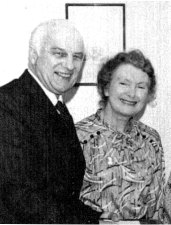
Walter Donaldson and wife
In 1954 Walter Donaldson took over the Superintendency, just one year after Her Majesty the Queen had made an official visit. When the Royal party landed at Ramsey the children and staff had places near the Town Hall, their cameras being well used. In the evening they went to Douglas for supper and watched a mammoth firework display.
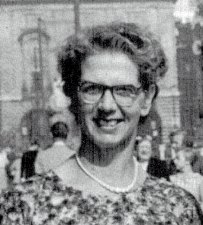
Sister Marjorie Button
By Christmas 1955 Sister Marjorie Button had taken over the leadership at a time when Harry Corbett and 'Sooty' had become a national institution on children's television. Within a short time Sister Marjorie acted as host to 'Sooty', whose creator had been invited to the Island as a guest of the Governor. Harry Corbett, who was a good friend of NCH, phoned 'Dalmeny' to ask if he might come over and spend a night, for there was nothing he loved more than to be with his young fans. He made the occasion a memorable one by taking 'Sooty' round all the bedrooms to say goodnight to the young children. These very young children were a new venture at 'Dalmeny' and the introduction of under-fives into family groups caused great excitement. From time to time Sister Marjorie would go over to Liverpool to fetch children and the first of them was a coloured baby who was soon accepted and loved by staff and children alike.
The need to consolidate the work in one centre became increasingly apparent. In 1956 it was decided to sell 'Ballacloan' to the Ramsey Football Club, the staff and children transferring to 'Dalmeny' and joining the family groups there. This also coincided with alterations which converted 'Dalmeny' into three separate flats. Life was also made easier by the purchase of a branch minibus which meant that children could now be taken farther afield for outings and the young ones could be taken to school in bad weather. Visitors continued to arrive, including the famous preacher Dr Leslie Weatherhead, who always enjoyed visiting the Island and the branch. In 1959 members of the Round Table in Douglas took the children on a flight over the Island, circling low over 'Dalmeny' to give the children a new view of their home.
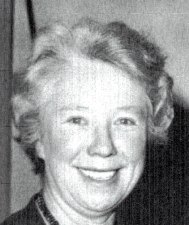 Sister Hilda Barrows |
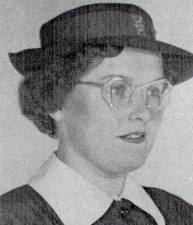 Sister Florence Kinrade |
Sister Marjorie's superintendency finished shortly after her marriage to John Billington. John had helped Marjorie with the branch accounts and NCH's loss was John's gain! The new Superintendent was Sister Hilda Barrows who was only able to stay for a short while because she had to return to Yorkshire to look after her mother. She was succeeded by Sister Florence Kinrade and still later by Sister Beryl Bonwick who came to the Island at the special request of the then Principal, the Rev. John W. Waterhouse, with an assurance that she would be asked to stay for only two years. It is good to report that she is still Superintendent in the Ramsey Centenary year!
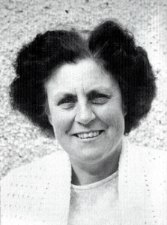
Sister Beryl Bonwick
In 1963 The Queen Mother visited. She landed from the Britannia at Ramsey and one of the boys presented her with a bouquet on the steps of the Town Hall. The children shouted and cheered their welcome. In the following year Sister Beryl had her first experience of TT Week. The senior boys had begged her to take them round the course. She found that every vehicle on the Island seemed to be there also, and no one had told her that the old girls and boys had a habit of coming over on the midnight boat for the races, sleeping in the branch chapel. She soon got into the habit of leaving flasks of coffee in the chapel.
Bonfire night was great fun and Mr Cooil, the gardener, made splendid flaming torches to go with the fireworks. There was also the usual supply of food - hot potatoes, toffee apples, gingerbread, soup and cocoa - for staff, children and their many friends.
Another annual event supported by the Ramsey branch is Tynwald Day when staff and children attend the special ceremony at St John's. In this way the young people can grow up to appreciate their Manx heritage. A special NCH occasion is Open Day, held in July, when friends of the branch are invited to come and 'look over' the house - a day when the family is 'at home'. From the very early days Founders' Day was also remembered. There is no general Spring Bank Holiday but children have a day off from school on the Monday. Founders' Day has therefore become a day out, with a picnic lunch, then home to the service in the evening and rounders in the field, followed by supper.
Although the work of child care remains much the same from year to year, buildings need to be adapted so as to provide better accommodation for both children and staff. In 1964 'Dalmeny' was invaded by workmen whose job was to convert the house into two complete and separate family units. Workmen were everywhere but the building still had to remain 'home'. However, there were some hilarious moments. On one occasion a hole suddenly appeared in a wall and a small boy fell through! He was thought to be in bed resting! On another occasion the newly installed electricity cable was accidentally cut by clippers, blacking-out the whole town for a while.
'Dalmeny' was now fully integrated into the life of the local community and the Superintendent regularly received an invitation to all the Island's important occasions, including the Garden Party at Government House. The summer holidays were spent on the beach or attending camps, with small groups staying at the branch cottage. The seniors often left the Island for camping holidays and in 1967 a group went to Scotland. They had a wonderful holiday, calling at the NCH branches at Rutherglen and Pitlochry as well as visiting Aberdeen. The following Easter the seniors camped at Frodsham and on Good Friday went to Llandudno, climbing to the top of Great Orme and having breakfast in the snow on the summit at 6.30 a.m.! Snow was an unusual event on the Island, but in February 1969 avery heavy fall completely isolated 'Dalmeny' and all roads going south were blocked. Mr W. J. Thomas, the Home's Financial Secretary, was visiting for a Committee and had to delay his return to London.
1969 was also a memorable occasion for the whole family of NCH, being Centenary Year. Some of the children from 'Dalmeny' attended the great pageant at the Royal Albert Hall in London, meeting several old girls and boys who came to join in the celebration. The Island had its own special events including a Centenary Service in Douglas.
NCH in Ramsey soon discovered a need for other types of child and family care in addition to a children's home. A mother unable to cope with both her child and her work tried to take her own life. She was brought to Sister Beryl who was able to give her care and support by looking after her child during the day - and so 'day care' was started. Children of all ages began to attend at no fixed hours, some arriving as early as 7 a.m. and staying perhaps until eight o'clock in the evening. School-aged children came before and after school. Some were looked after during holidays and others came on Saturdays only. In other words, a whole range of day care had been started with an age span beginning with the baby of a few months to the 14-year-old. There was a playgroup for children aged 1 to 4 years and this provided splendid support for the one-parent family, parents who were finding it difficult to cope, or for the child who was making little progress at school. After a year an assessment was made to judge whether the child was developing adequately. The type of child who came to the playgroup and to day care varied a great deal, as did the standard of the homes they represented. Some had been well looked after, whilst others needed an immediate change of clothing and a bath! A mothers' group also grew up. Mothers would arrive, drink coffee, sometimes smoke cigarettes endlessly, but most important of all would talk to one another and to staff. At last someone was listening to them and, perhaps for the first time, they felt truly relaxed. There would be visits from the social worker and the health visitor, who called almost casually, and in this way many of the problems that worried the mothers and even some of the fathers were eased or resolved. But even more was being done to help parents and children; other families in trouble would be visited by Sister Beryl or another member of staff. Sometimes they simply needed advice, or a vital piece of furniture, or just to know someone care for them. Of course, sometimes the problems were desperately serious, but no one was turned away.
A fostering service was also developed with a careful selection of prospective parents and regular visiting once a child was placed. Some children were available for adoption and again social work visits and placements were made.
Work was also being done with a number of handicapped children. Two profoundly deaf children were taught to speak and lip-read, whilst two retarded boys with no co-ordination were helped and taught to sit, so that for the first time they were able to attend a remedial class. Another boy, attending a normal school, needed extra help and this was gladly given. Relief was also provided for parents with severely handicapped children so that they could have a day off or simply an opportunity to go shopping.
'Dalmeny' also developed its own form of 'intermediate treatment'. Now and then a boy or girl would spend a few hours working in the grounds, playing with the small children, helping to get tea, or just talking to the staff. This work was done in conjunction with the school and the educational psychologist. Senior schools on the Island would ask Sister Beryl to talk to the older children about child care, often during a careers evening. Every year mock interview sessions for the grammar school were held so that senior children would have a better idea of what the work of child care was all about. Many young persons realised that they needed to be more than just 'interested in children' to work in a children's home.
Because of 'Dalmeny's' situation it was difficult for staff to undertake training on the mainland and, in order to counter this problem, an introductory child care course (similar to in-service training) was held regularly at the branch, as well as other short courses at various times throughout the year. This provision served others in addition to NCH workers and, apart from the NNEB Course run by the Further Education College, these courses were the only real training for child care workers.
It might have been thought that such a wide-ranging provision could hardly be bettered, but 'Dalmeny' also helped to inaugurate an Island Citizens' Advice Service. A committee was formed to raise funds and two ex- perienced counsellors joined Sister Beryl and her deputy. These four enterprising enthusiasts started work and, with a list of professional people who were prepared to give freely of their time, operated a service in Ramsey twice a week which has now spread to Castletown, Douglas and Peel. Not unexpectedly they found that many of the problems referred were family concerns.
Another unusual form of help was to care for children at night when their mothers were, perhaps, working as nurses on night duty. There is little doubt that as other needs are brought to light NCH will be eager to play its part in providing, or helping others to provide, whatever service is required.
In 1974 extensive work on the buildings was undertaken to improve facilities for children and staff. The old and new buildings are now joined by a 'bridge' at first-floor level and visitors who knew the branch in earlier days hardly recognise it today. These alterations caused such disruption that children and staff had to be accommodated elsewhere. With singular appropriateness it was found possible to borrow the old 'Ballacloan' which NCH had owned in earlier days. Perhaps the old place was glad once again to be part of NCH!
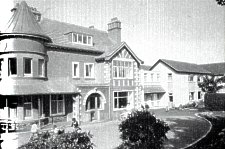
The old and new 'Dalmeny'
In December 1974 the branch was officially reopened at a simple ceremony attended by the Bishop and by NCH Principal, the Rev. Gordon Barritt.
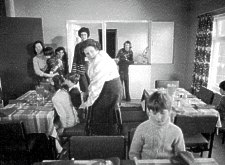
1977 - the year our children became 'film stars'
The following year Sister Louise, from Australia - who had been at 'Dalmeny' in 1953 - was a welcome visitor. In 1976 some of the young people went to King William College in the south of the Island to demonstrate before a very special visitor - Prince Philip - what a playgroup was all about, and the children were delighted when he came and spoke to them. It was also in 1976 that two of the girls went to a Swedish/Manx Guide Camp and brought back a Swedish girl to stay for a week. The following year 'Kaleidoscope of Care' was filmed and it included many of the children and staff of 'Dalmeny'. There was great excitement when Peter Purves, of television fame, arrived with the technicians to spend many hours in preparation and rehearsal. There were lovely shots not only of children and staff at the branch and on the beach but also of Sister Beryl taking one of the children into a Ramsey shoe shop. How good it was to see the girl in question with her own very clear idea of what she wanted!
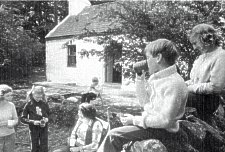
The cottage in the Glen
Mention has been made of a cottage, used by the branch, which has been a wonderful added amenity and indeed rather special in a number of ways. Situated in Balaglass Glen it was built in the 17th century. The Forestry Board agreed a peppercorn rent, provided that all the repairs were done by NCH. Fortunately the walls and the roof were sound, and only the floorboards needed replacing together with an additional small window in each upstairs room. The husband of one of the staff helped and very soon the place was transformed.
New ceilings were created with hardboard and a fire escape was added. Downstairs were two small rooms and a kitchen with an open fire. The walls were stripped and layer upon layer of wallpaper removed. Old beams were stained and walls were whitewashed. Water was obtained from a tap some distance along the lane. As the cottage was to be used by children there was an obvious need for running water, so rocks were dug up and pipes brought along the lane to the kitchen. A sink unit was donated by friends and the day came when the taps were turned on for the first time. Unfortunately the force of the water was so great that on three occasions the cottage was flooded, until various repairs were completed so that the water was able to run through the pipes without blowing out all the joints! As the only way of approach to the cottage was along a narrow path through the glen, everything had to be carried. At first it was cement and paint, then a three-piece suite, a bed-settee and, much to the amazement of the onlookers, an electric cooker. A shed was built at the bottom of the garden and a chemical toilet installed. The cost of all the work was covered by friends. The Methodist Junior Church at Greeve, who bought much of the equipment and have continued to support the project, are typical of many individuals and groups who have made our 'Cottage in the Glen' possible.
This marvellous co-operative effort still provides all that is needed for a happy holiday, as well as for day-time visits. Two bedrooms, a sitting room with chairs and a bed-settee, a kitchen with large fireplace, a sink with running water, an electric cooker, table and stools, with fire if necessary burning wood found in the Glen - what more could one want? The Glen itself is a children's paradise with trees to climb, swings and rope ladders, and a river on each side of the cottage. There is always something interesting to be found and for those who want to fish there are trout in the river. The cottage has been constantly in use, providing children with an opportunity to think and act for themselves, for they, and not the adults, decide on the menus, cooking their own meals and thus learning the basics of housekeeping.
For the children in the Isle of Man 1979 will long be remembered. It was the International Year of the Child, about which Sister Beryl spoke on Marix radio; it was the Isle of Man's Millenium Year during which very special events were held to commemorate 1,000 years of Tynwald rule. Every school child received a set of millenium coins and the Queen visited Tynwald. Sister Beryl represented NCH at a garden party at Government House and the children had special millenium rail tickets which enabled them to travel many miles by train during the holidays. This was a marvellous forerunner to 1980 when the Ramsey branch of NCH celebrates its Centenary - 100 years of caring for children, first of all in a children's home but also in more recent times in such a great variety of ways. It is also a celebration of 100 years of close co-operation with the Manx people.
What of the future? NCH started as an `adopted child', taking over a 'refuge for destitute children'. For 100 years successive members of staff have undertaken the steady, solid work of child care, but there is no doubt that the most significant developments have taken place in the past decade. There is no branch of NCH which is more of a base for the most varied forms of child and family care than Ramsey. Who knows what the future holds? One thing is certain - NCH will continue to work in the Isle of Man for so long as there is a need:
Whatever changes may be necessary will be made with the same confidence and enterprise shown in these recent years of development. The Island is a place of peace and tranquillity; its long history and culture have given it a special attraction. If child care is concerned about professional skills and expertise it is equally true that surroundings have a profound effect on a child's ability to come to terms with himsself. The Ramsey branch continues to provide a combination of skill and atmosphere which will bring healing and confidence to children, young people and families.
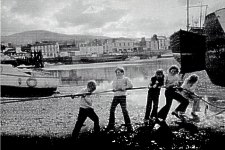
|
|
||
|
|
||
|
|
||
|
Any comments, errors or omissions gratefully received
The Editor |
||